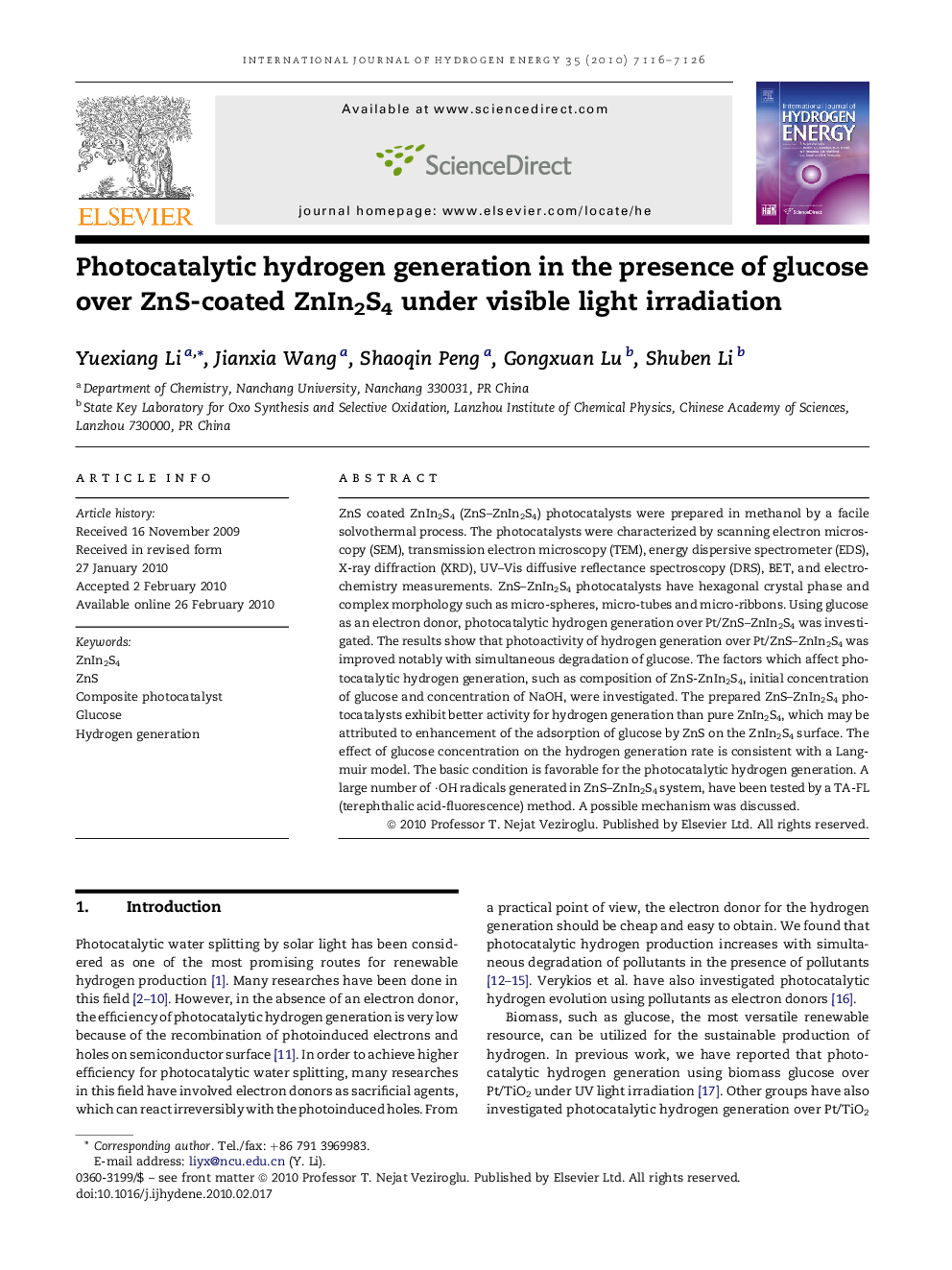| Article ID | Journal | Published Year | Pages | File Type |
|---|---|---|---|---|
| 1272956 | International Journal of Hydrogen Energy | 2010 | 11 Pages |
ZnS coated ZnIn2S4 (ZnS–ZnIn2S4) photocatalysts were prepared in methanol by a facile solvothermal process. The photocatalysts were characterized by scanning electron microscopy (SEM), transmission electron microscopy (TEM), energy dispersive spectrometer (EDS), X-ray diffraction (XRD), UV–Vis diffusive reflectance spectroscopy (DRS), BET, and electrochemistry measurements. ZnS–ZnIn2S4 photocatalysts have hexagonal crystal phase and complex morphology such as micro-spheres, micro-tubes and micro-ribbons. Using glucose as an electron donor, photocatalytic hydrogen generation over Pt/ZnS–ZnIn2S4 was investigated. The results show that photoactivity of hydrogen generation over Pt/ZnS–ZnIn2S4 was improved notably with simultaneous degradation of glucose. The factors which affect photocatalytic hydrogen generation, such as composition of ZnS-ZnIn2S4, initial concentration of glucose and concentration of NaOH, were investigated. The prepared ZnS–ZnIn2S4 photocatalysts exhibit better activity for hydrogen generation than pure ZnIn2S4, which may be attributed to enhancement of the adsorption of glucose by ZnS on the ZnIn2S4 surface. The effect of glucose concentration on the hydrogen generation rate is consistent with a Langmuir model. The basic condition is favorable for the photocatalytic hydrogen generation. A large number of ·OH radicals generated in ZnS–ZnIn2S4 system, have been tested by a TA-FL (terephthalic acid-fluorescence) method. A possible mechanism was discussed.
